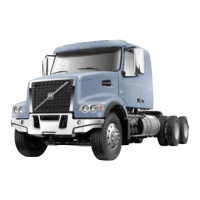OPERATION 291
ENGINE OPERATION
General
Proper operation, driving techniques and maintenance are key factors in obtaining the
maximum life and economy from a modern turbocharged diesel engine. This section has
operational information about the components that make up the engine.
When changing gears, avoid lugging to extend engine life. When the engine is operating at
full throttle and maximum governed speed cannot be reached or maintained, the engine is
lugging. When approaching a hill requiring more power, it is necessary to downshift the
transmission as the vehicle goes into the grade. Accelerating to the governed engine speed
will give additional power at approximately the same road speed. For shifting instructions,
see the transmission manufacturer’s operator’s manual.
Always start moving the load in a gear low enough so that the engine can be accelerated
to the governed speed. Then shift to the next gear as the engine decelerates. For loaded
vehicles, do not skip a gear or lug the engine while getting up to cruising speed. For empty
or light loads, it is permissible to skip gears.
When operating on a level highway or at cruising speed, hold the engine speed at
approximately 1400 to 1600 rpm for large displacement engines to achieve power and
economical fuel consumption.
The operator should understand the operating characteristics of the engine the vehicle is
equipped with. Modern diesel engines have maximum torques at much lower engine speeds
than in the past. As such, these engines are designed to perform satisfactorily at a lower
speed. New transmissions with wide ratio steps between gears demand the use of these
engines.

